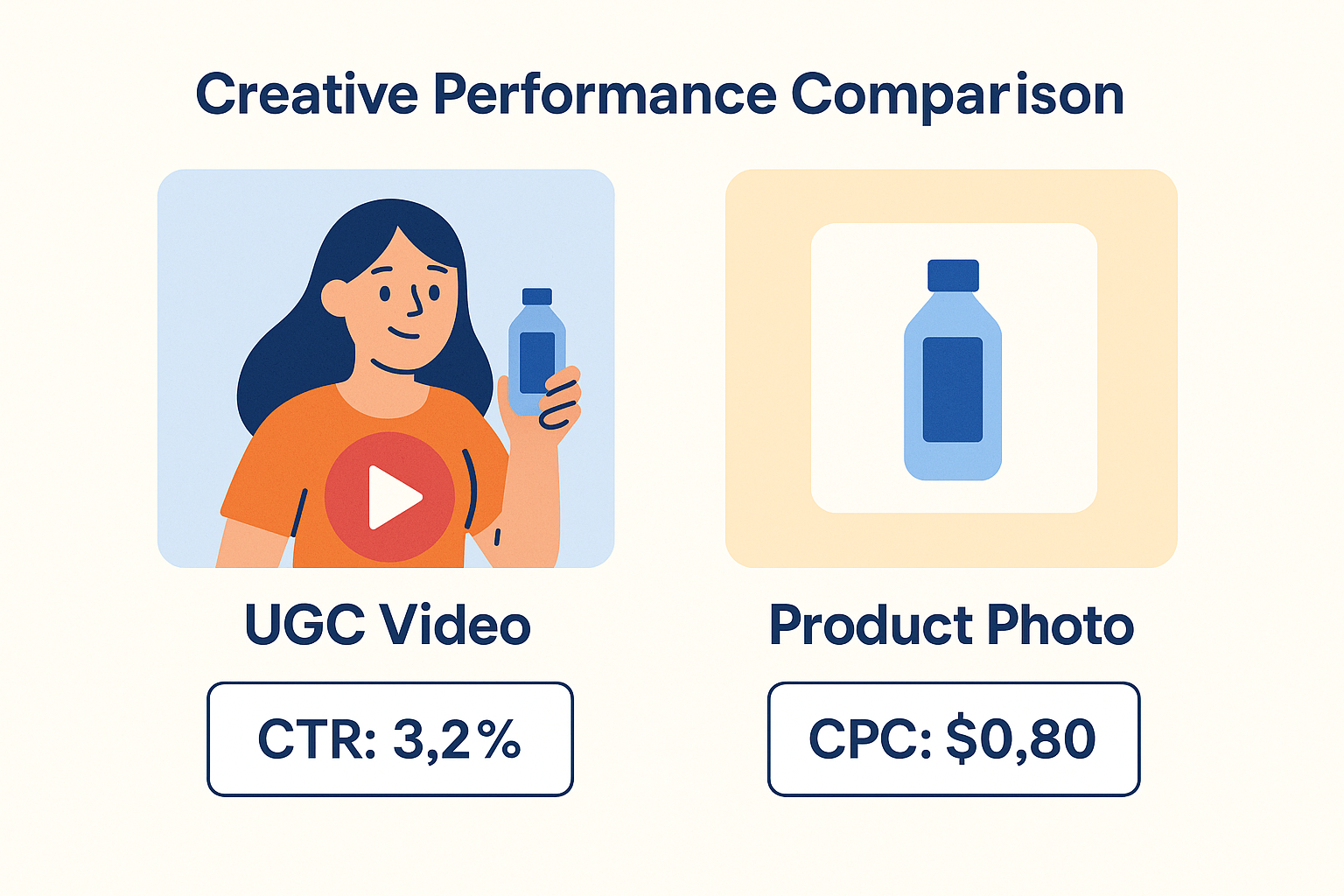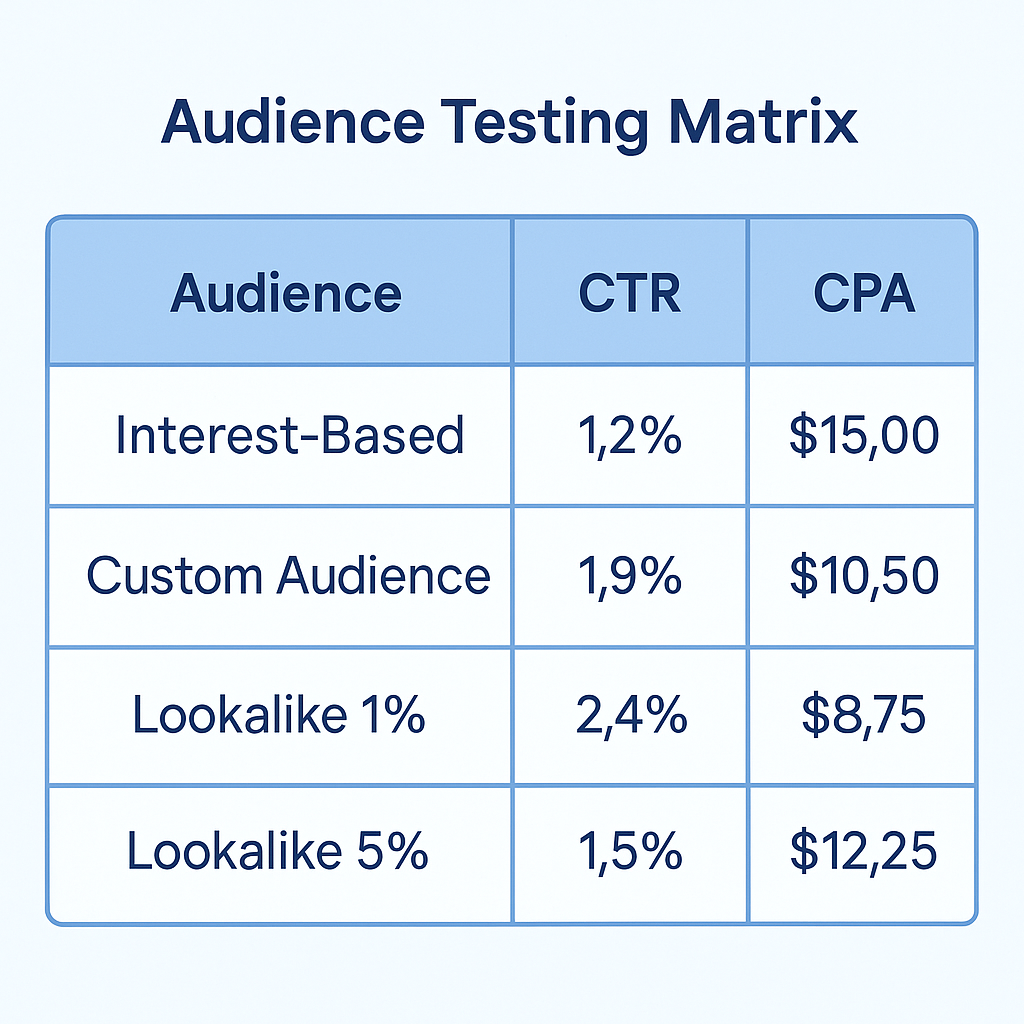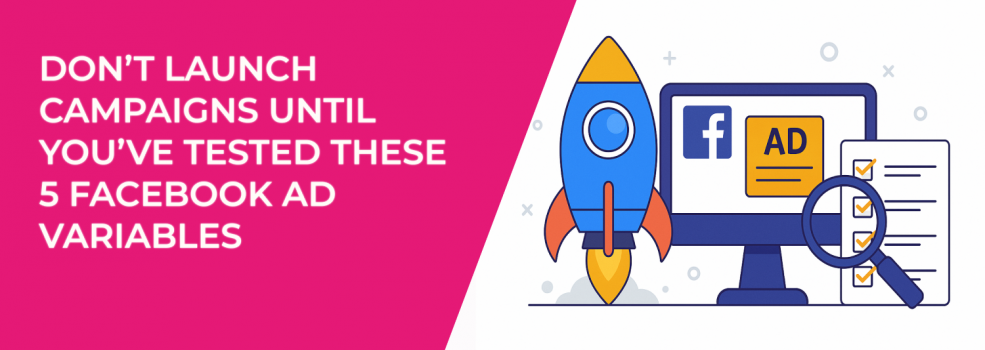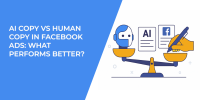Running Facebook ads without testing is risky. Even small changes to your visuals, copy, or targeting can lead to major shifts in performance — both good and bad. If you skip the testing phase, you’re not just wasting money. You’re missing the chance to improve what really matters.
Before you publish your next campaign, take time to test these five essential variables. Doing this upfront gives you real data to work with — not just guesses.
1. Ad Creative — It Shapes How People Respond
Your visual is the first thing users notice. It’s the difference between being ignored and getting clicked. That’s why creative testing should be your first move.
Test key visual elements like:
-
Format. Compare single image, carousel, or short-form video.
-
Style. Use lifestyle photography, product-only images, or user-generated content (UGC).
-
Color scheme and background. Try clean white, soft neutrals, or bold contrasting tones.
-
Real vs. polished. Authentic smartphone photos sometimes outperform high-budget designs.
For example, if you’re promoting a skincare product, try one ad with a clean product flat lay and another showing someone using the product naturally. You may find that UGC performs better — especially on Instagram Stories or Reels.

Need help structuring your creative tests? Key Strategies for Facebook Ad Testing: What You Need to Know offers a clear, step-by-step process for getting started.
And if you’re dealing with visual fatigue, switching up formats may help. Creative variation is also one of the best ways to get out of the “learning limited” trap. Learn more in Facebook Ads Not Converting: How To Fix It.
2. Ad Copy — Headlines and Text That Drive Clicks
Once someone stops scrolling, your ad copy needs to do the next job: convincing them to take action. The headline and first few lines of text play a huge role in that.
Start testing your copy by changing:
-
The opening hook. Try a question, bold statement, or relatable pain point.
-
Tone of voice. Compare playful vs. serious, or personal vs. professional.
-
Length. Test short copy (1–2 lines) against longer formats that explain more.
-
Focus. Emphasize specific benefits, results, or time-limited offers.
For example, you might begin one version with “Struggling to stay organized?” and another with “The fastest way to organize your work week.” Each appeals to a different mindset — curiosity vs. speed — and may attract different audiences.
Struggling to write copy that connects? This guide will help you refine your targeting message: Facebook Ad Targeting 101: How to Reach the Right Audience. It dives into how the who impacts the what you say.
3. CTA Buttons — Small Changes, Big Impact
The call-to-action button is often overlooked, but it has a big influence on user behavior. A vague or mismatched CTA can confuse people or cause them to hesitate. And in performance campaigns, even a small hesitation can cost you.
Test different CTA labels such as:
-
“Learn More,” for informational content.
-
“Shop Now,” when promoting physical products.
-
“Download,” for lead magnets and resources.
-
“Book Now,” when encouraging appointments or demos.
-
“Get Offer,” for discounts and promos.
For example, if you’re offering a free PDF, “Download Free Guide” might convert better than “Learn More.” But if your goal is to build long-term engagement, “Learn More” may result in higher-quality leads.
The button needs to reflect the user’s intent — and your campaign objective. If your goal is lead generation, but your CTA sounds like a product pitch, the disconnect could reduce your conversion rate.
To choose the right campaign setup from the start, explore Meta Ad Campaign Objectives Explained: How to Choose the Right One.
4. Audience Targeting — Who You Reach Changes Everything
Even the best creative and copy won’t help if the ad reaches the wrong people. Your audience controls not only cost but also conversion quality. That’s why it’s essential to test more than one version.

Start with tests that include:
-
Interest-based audiences. Based on pages, activities, or buying behavior.
-
Custom audiences. Retarget people from your website, email list, or video views.
-
Lookalike audiences. Try 1%, 3%, and 5% versions based on your best customers.
-
Demographic filters. Vary age, gender, device, and language to see what changes.
-
Stacked vs. narrowed interests. Test layered conditions (AND) against broader stacks (OR).
Let’s say you’re advertising a fitness tracker. You could build one audience based on fitness and tech interests, and another lookalike audience based on your recent buyers. One may bring cheaper clicks — but the other might convert better.
If you're not seeing enough reach or your ad is stuck in "learning limited," your audience settings could be the problem. Why You See 'Ad Set May Get Zero' on Facebook and How to Fix It can help you spot and fix this early.
Also, make sure your targeting aligns with your overall funnel stage. Broad interest audiences can be great at the top of the funnel, but for retargeting, custom audiences usually perform better.
5. Ad Placements — Where Your Ad Appears Matters More Than You Think
Facebook gives you several options for where your ads appear — and they don’t all perform equally. Some users prefer Feed content, others engage more in Stories or Reels. So don’t treat all placements the same.
Here are placements worth testing individually:
-
Facebook Feed.
-
Instagram Feed.
-
Facebook and Instagram Stories.
-
Instagram Reels.
-
Facebook Right Column.
-
Audience Network.
For example, a short video with fast pacing might work better in Reels, while the same video underperforms in the Feed. Static carousel ads tend to do well in the Facebook Feed but often get ignored in Stories. It’s not just about the content — it’s about where it’s being shown.
You can test automatic placements against manual ones to see what delivers better cost-per-result. Just be sure to use content that's formatted properly for each placement.
Looking for a breakdown of placement strategy? This article can help: Facebook Ads Not Converting: How To Fix It — it covers how mismatched creative and placement often lead to low engagement.
Final Thoughts: Test Small Before You Scale Big
You don’t need to test everything at once. Start with one variable — like creative — and test two or three options with the same copy and audience. Once you find a winner, test that version with different headlines, audiences, or placements.
When testing, keep an eye on:
-
CTR (click-through rate), to measure engagement.
-
CPC (cost per click), to track efficiency.
-
CPA (cost per acquisition), to evaluate overall ROI.
-
Conversion rate, especially if you're optimizing for leads or purchases.
-
Lead or customer quality, not just volume.
Most importantly, test one thing at a time. If you change everything — the creative, the copy, and the audience — you won’t know what caused the improvement or the drop.
To build smarter audience segments and structure your targeting effectively, check out How to Define a Target Audience for Marketing: A Step-by-Step Guide.
Testing isn't just for big brands with big budgets. It’s how any advertiser — even with $10 a day — can make data-driven decisions, improve results, and avoid wasting money on assumptions.
So before you launch your next campaign, pause and ask: have I tested the five things that matter most?

